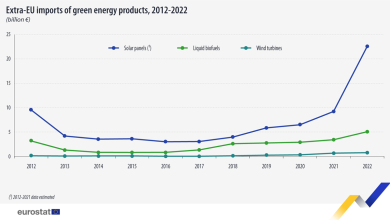The Path of Hydrogen Energy
On August 5, 2021, the Government of the Russian Federation approved the Concept for the Development of Hydrogen Energy in Russia, thereby joining the group of countries supporting and working towards the transition to hydrogen energy.
Hydrogen occupied a serious position on the global energy and climate agenda in 2021. It was mentioned at all conferences and forums related to energy.
With the transition to low-carbon energy declared by the countries of the Paris Agreement, in the medium time term, we should expect multiple growths in demand for ‘carbon-free’ hydrogen as a fundamentally new energy source. If all bold predictions come true, we will witness a global energy transition. Currently, the hydrogen energy industry just started its development, the global community became interested in it in 2017 (Japan), by the end of 2021 approximately 25 countries have already adopted hydrogen strategy. The main technologies for both obtaining hydrogen and its energy generation are currently rather experimental, than practical. Moreover, like everything new, these technologies are expensive and yet can’t compete with traditional power plants. However, in my opinion, over the time, the situation may improve due to the new approaches, thus we should expect a hydrogen cost reduction and an increase in its competitiveness, as it has already happened to solar energy. The introduction of a carbon tax declared by European countries can also increase the competitiveness of hydrogen. The investment attractiveness of hydrogen technologies will depend on their value. Forecasts on emission charges also differ, for example, in China it may reach USD 6 per ton of CO2, and on the territory of the European Union EUR 50 per ton of CO2.
Currently, the cost of hydrogen as an energy resource can be measured just approximately because the global market for hydrogen has not yet been formed. Now the cost of hydrogen produced by electrolysis in the world (it is practically not used as an energy carrier, but mainly is used in the chemical industry) ranges from USD 4 to USD 5.5 per kg. In terms of energy industry, this is 65% more expensive than natural gas (comparison is given for EU countries), in Russia the difference will be even greater.
There are also few unresolved issues in terms of the implementation of the entire technological chain to produce electricity from hydrogen. It is appropriate to consider all stages: production, transport, storage, energy generation.
Production
Currently, steam methane reforming with the production of so-called ‘gray’ hydrogen is considered to be the industrially developed technology for the production of hydrogen in Russia. In the process of transition to a low-carbon economy, there will be no demand for such hydrogen, since its production creates carbon dioxide, which is released into the atmosphere. Thus, only that hydrogen, with no carbon emission, will be demanded: ‘blue’ (steam conversion of methane using carbon capture technologies), ‘turquoise’ (pyrolysis of methane with burial or use of solid carbon), ‘green’ (hydrogen production by electrolysis, electricity is generated by renewable energy sources), ‘yellow’ (hydrogen production by electrolysis at nuclear power plants). The world science and industry are now working to develop and improve these technologies. The production of such hydrogen is practically non-existent. The cost of producing such hydrogen is several times higher than with steam reforming of methane.
Transport
When transporting hydrogen, there are two grant issues of its physical and chemical properties. The first issue is that hydrogen is light and volatile gas. Under normal conditions, the density of hydrogen is 10 times lower than the density of natural gas, in a liquefied state (-253°C, 1 bar) is 6 times lower. The heat of combustion per unit volume of hydrogen (both in the gaseous and liquefied state) is 3 times lower than that of natural gas. Thus, to transfer the same amount of energy (at the same pressure), it is necessary to pump 3 times more hydrogen by volume through the pipeline than of natural gas. Moreover, the boiling point of hydrogen is much lower than that of natural gas, which complicates and increases the cost of its liquefaction process.
The second issue is the hydrogen embrittlement of the metal or hydrogen corrosion. When a metal interacts with pure hydrogen, the mechanical properties of the metal change rather quickly and its destruction occurs.
Thus, the transportation of pure hydrogen imposes certain difficulties, increased compared to natural gas transportation systems. As far as I know, there is no experience of successful operation of hydrogen transport systems over long distances (both in gaseous and liquefied form) in the world.
Storage
The main issue in the storage systems is the large specific volume, volatility, and explosiveness of hydrogen. Scientists propose to store hydrogen in a compressed state in large-capacity receivers, hydrogen can be pumped into underground salt caverns under atmospheric pressure. It is also possible to store hydrogen in a liquefied state, organizing a separate boil-off gas liquefaction system. The issue of storing hydrogen in a chemically bound state is also of great importance.
As far as I know, there is no experience of successful operation of storage systems for large volumes of hydrogen in the world. The exception is liquefied hydrogen tanks with a capacity of about 1500 cubic meters, installed at spaceports.
Energy generation
The generation of electrical energy from hydrogen is possible either by burning it or by means of special electrochemical devices, fuel cells.
Currently, there are no industrial power plants (power boilers, gas turbines, etc.) capable of burning pure hydrogen. Scientists and engineers all over the world are constantly conducting research in this field. The issue of burning pure hydrogen is its burning rate is 8 times faster than of methane and, accordingly, the torch itself is very short, and the risk of flame backflow into the burner also highly increases. In particular, existing gas turbine plants and natural gas boiler burners are therefore not suitable for burning pure hydrogen. Another issue is the temperature of the torch during the combustion of hydrogen is 15% higher than during the combustion of natural gas (about 2200°C), respectively, which provokes an increased formation of thermal nitrogen oxides, which are harmful to people and the environment. Among the issues for the Russian Federation, there is a lack of the approved industrial safety standards for the use of hydrogen as fuel at thermal power plants and boiler houses.
Energy fuel cells are also being developed. Fuel cells are already successfully used in the world in automotive transport, however, due to the small resource of continuous operation, these fuel cells can’t be used as a source of electrical energy. In the scientific literature the prototypes of power fuel cells with a capacity of 300 kW, 1.2 and 2.4 MW (FuelCell Energy), and 30 MW (Ansaldo Fuel Cells) are mentioned. But this is not yet a serial product, and it is obvious that the unifying power of such fuel cells is not sufficient for use in a large power industry. In my opinion, the world’s hydrogen energy will follow the path of using fuel cells.
Summing up, I would like to say that today we are witnessing an ‘energy revolution’, a new energy transition, where hydrogen energy plays one of the leading roles. Of course, due to the innovativeness of the task, there are many technical issues and questions. This is a new and promising field of energy, which opens up the scope for creativity of scientists and engineers. Of course, progress is not possible without the training of personnel for a new industry, and the leading technical universities in Russia and around the world should contribute. At the Peter the Great St. Petersburg Polytechnic University (SPbPU) it is planned to implement an educational master program ‘Hydrogen Energy’.
Yaroslav Vladimirov is an Associate Professor of Higher School of Nuclear and Heat Power Engineering of Peter the Great St. Petersburg Polytechnic University (SPbPU)







